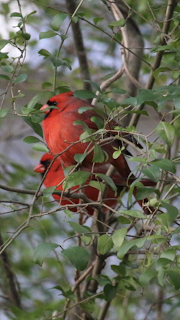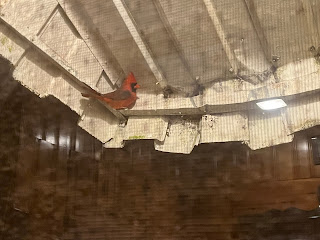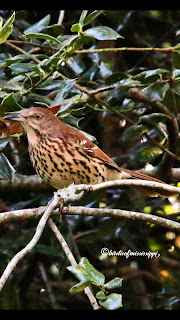WINTER BIRDIE FEEDING
WINTER BIRDIE FEEDING
By Peggy
Williams AKA Birdie of Mississippi
Photographing birds in
the winter is one of my favorite things to do.
Even though I often get very cold sitting out during the winter months,
it is one of the best times of year to get great photographs of birds. There are many advantages to winter
birding. The birds come in great
quantities to the feeders because bugs and blooming flowers are not as
plentiful so they are in search of high energy food to withstand the cold. Suet
and black oil sunflower seed are high energy foods to fill your feeders and it
keeps them coming and helps provide for them during these cold winter months.
I like that there
aren’t many bugs to swarm around and bite me while I sit outdoors during the
winter. I can sit inside my duck blind
tent and it keeps the wind and most of the cold off of me and best of all - I
don’t get too hot or have to swat mosquitoes!
As Julie Andrews sang in the Sound
of Music - “These are a few of my favorite things!”
The birds are simply
beautiful at this time of year because they have thicker, fluffier feathers to
keep themselves warm. Their colorings
are at their peak because the juveniles have fully matured and their feathers
are now as they will be as an adult - especially the male Northern
Cardinal! Their red coloring is bright
and cheery on these cold gray days! I
look out my kitchen window and it looks as though I have apple trees as
cardinals sit spaced out on the branches looking like ripe, red apples!
The trees are perfect
for capturing the solitary birds on the bare branches since most of the leaves
are gone for the winter creating nice clean Birdie portraits. Even though the
hummingbirds and many other birds have migrated for the winter, there are still
lots of birds that will remain with us to enjoy for the winter. We will still
see male and female Cardinals, Blue Jays, Downey Woodpeckers, Carolina
Chickadees, Tufted Titmouse, Juncos, House Finch, Red-bellied Woodpeckers,
Carolina Wrens, Robins, Mourning Doves, and Mockingbirds.
Providing fresh water
daily can become very important since leaves are falling into birdbaths and making
for a swampy mess of deteriorating leaves.
Birds can eat snow and ice to fulfill their winter needs, but they
appreciate open, available water that they don’t have to expend so much energy to
drink. A watering tip that I have used
in the winter is to place a couple of branches or stones in the birdbath for
the birdies to perch on so that they don’t have to stand in cold water. A warning to us that I know may seem like
common sense to most, but since I have read this warning several times in bird
books, some people must do this. Never add glycerin or any form of antifreeze
to your birdbath water because this proves deadly for the birds that drink or
bathe in it!
So if you love birds
as I do, I hope that you will enjoy watching the birds in your yard and that
you will help them survive this winter. Our bird population needs protecting and the
more that we can do to help them survive the better it will also be for humans. “Look at the birds of the air” Matthew 6:26 and
be thankful because they are a true blessing from God.
My photos may be viewed & “LIKED”
on Facebook, Instagram and Pinterest - “Birdie of Mississippi”.
E-mail: birdieofmississippi@gmail.com
Read my Blog @
http://www.birdieofmississippi.blogspot.com





Comments
Post a Comment